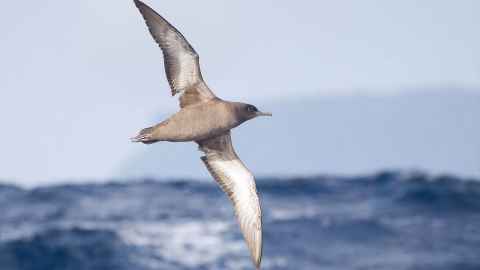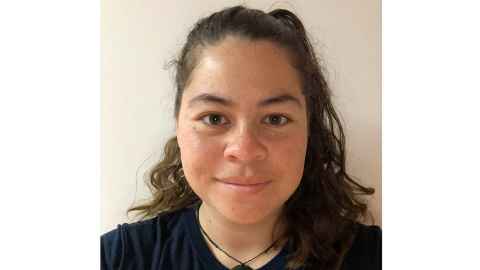Mātauranga Māori informs study of seabirds tītī and ōi
31 July 2023
Student Sarah Rewi took a deep dive into birds in the petrel family.

Mātauranga Māori and Western science informed a masters student’s thesis on seabirds in the petrel family, tītī (sooty shearwater) and ōi (grey faced petrel).
“We need a cross-cultural approach where Western and Māori methods, knowledge and practices are both used for managing natural resources,” says Sarah Rewi (Ngāpuhi nui tonu), of the School of Biological Sciences at Waipapa Taumata Rau, University of Auckland.
Seabird populations are in decline in Aotearoa New Zealand, a hotspot for global seabird diversity.
Called “muttonbirds” in English because they supposedly tasted like mutton, the fledgling chicks of birds in the petrel family have been harvested for kai by Māori for hundreds of years. Customary practices have included rotating harvests between different groups of birds and prohibitions on damaging birds’ burrows, according to Rewi.
A representative of iwi Te Kawerau ā Maki in Auckland and a kaumatua from Ngāti Wai in Northland shared accounts of customary practices and the role of kaitiaki -- a term akin to guardianship but with a complex and spiritual meaning – and other aspects of Te Ao Māori.
The kaumatua recalled that “the old people would say which of the holes to go to and which were to be left. This was to allow the bird to mature and return to the island in the same way its parents did for the continuation of the colony.”
There were some vivid accounts.
“My father still remembers being lowered down the cliffs at Te Henga (Bethells Beach) to gather the tītī,” said the Te Kawerau ā Maki representative. Hanging by a harakeke (flax) rope, with a kete (woven bag) on his back, the harvester would flick a bracken fern into a burrow, catch the fluffy feathers of the bird on the frond, and pull it out.

The kaumatua recalled harvests on the Whangarei coast:
“My brothers would get lowered down the side of the cliffs tied to a rope and to where the ōi holes were.” Poking inside a burrow with a forked stick, the exercise involved trapping a chick’s head, then reaching in, hand protected by a sugar sack, to break the bird’s neck.
Another part of Rewi’s study investigated how the birds are being affected by a polluted environment.
Analysing the birds’ feathers by applying a technique called mass spectrometry, she found elevated mercury levels in ōi (grey faced petrel) chicks.
While there wasn’t evidence of a danger to human health from consuming the birds, the findings were relayed to iwi and prompted a deeper investigation, now underway, using blood samples from birds. Overall, levels of heavy metals detected weren’t associated with physiological effects on the birds.
Ōi are found in the upper North Island and absorb mercury from eating squid. Tītī numbers are greatest in islands around Rakiura (Stewart Island) where the birds are harvested exclusively by Raikura Māori, of Ngāi Tahu.
The study also involved another seabird, the Toanui (flesh-footed shearwater).
Rewi and one of her supervisors, Dr Dan Hikuroa, published a paper based on the research in the International Journal of Environmental Research and Public Health. Also involved in the research were Dr Brendon Dunphy, Dr Phil Lyver, Graeme Taylor, Dr Todd Landers and Dr Matt Rayner.
Media contact
Paul Panckhurst | media adviser
M: 022 032 8475
E: paul.panckhurst@auckland.ac.nz